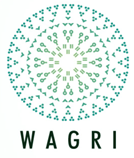National Agricultural Food Research Organization (NARO), has developed an AI algorithm that can visualize the image features, which become the basis for the AI algorithm's judgment. When this AI algorithm is utilized in potato leaf disease diagnosis, it was found that we could diagnose whether the leaf is healthy or diseased with an accuracy of 95% or more, based on the characteristics of the disease. Since this AI algorithm can clarify the basis of its judgment, our approach is safe and reliable for the user. The developed AI algorithm is expected to be used in various fields other than the agriculture field.
Overview
NARO (President Kazuo KYUMA) established the Research Center for Agricultural Information Technology (RCAIT) in October 2018, which is carrying out full-scale agricultural research utilizing AI and big data. As a research result of this center, we have developed a new AI algorithm that can visualize the features of images. Moreover, the AI algorithm is expected to be used for pest diagnosis in agricultural products. Pests cause severe damage to the crops. The potential loss from pests in the world agriculture is estimated to be $ 540 billion annually. In Japan, disasters such as rice withering due to the planthopper that caused a loss exceeding 10 billion yen, have occurred. Hence to support the countermeasures for such situations, the development of an automatic disease and pest identification system utilizing an AI algorithm has been promoted.
Most of today's deep learning algorithms are black-box models. The users are having difficulties in explaining the features learned or the basis of the judgment by the deep learning (AI) algorithm. As the field of AI utilization expands, cases that require the basis for the judgment such as, when using it as a reference for human decision making, emerges consecutively. On the other hand, there is a growing social demand for the AI algorithms that can explain their basis of judgment. Therefore, NARO has developed an AI algorithm that can visualize the features of images that act as the basis for its decision making.
The developed AI algorithm can visualize the learned features using an auto-encoder (Fig. 1). In the example of a disease diagnosis on a potato leaf image, images of a "diseased" leaf and a "healthy" leaf were generated (Fig. 2) from the original diseased leaf images. As a result, from the fact that the symptom disappeared in the healthy leaves, it was confirmed that the AI algorithm was able to learn the features/characteristics of the disease correctly.
By developing this AI algorithm, we are planning to introduce this AI algorithm into the actual fields of potatoes, where the detection of diseased plants is particularly essential. We are also trying to apply it to the counting of leafhoppers, which is an important pest of rice by the type. The developed AI algorithm is expected to be used in various fields other than the agriculture field, where an AI algorithm that can explain the basis of its judgment is required.
Publication
Harshana Habaragamuwa, Yu Oishi, Masaru Takeya, Kenichi Tanaka, Plant Disease Identification using Explainable Features with Deep Convolutional Neural Network, 2019 International Joint Conference on JSAM and SASJ, and CIGR VI Technical Symposium joining FWFNWG and FSWG Workshops, 2019/9/4
Reference Information








